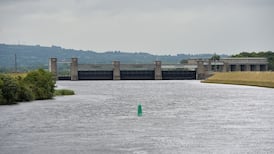Analysis:The biggest problem facing the main Opposition parties, more than six months before the election, is the widespread perception among the voters, as evidenced by the latest Irish Times/TNS mrbi opinion poll, that they don't have a chance of forming the next government.
The poll shows that 57 per cent of voters believe Fianna Fáil and the PDs will form the next government, while just 17 per cent believe that Fine Gael and Labour will take power with the possible support of the Greens.
If this view becomes unshakable in the minds of the voters, it could finish the election as a contest between competing coalitions long before it ever begins. There has been a massive turnaround since last May when The Irish Times poll showed that 39 per cent believed a Fianna Fáil-PD coalition would form the next government, while 30 per cent believed it would be Fine Gael, Labour and the Greens.
The huge change in perception is now a real problem for the alternative government.
The paradox is that in spite of what people believe is going to happen, the actual level of support achieved by the parties indicates that the contest is still wide open, although it is clear that Fianna Fáil have put on a spurt since the controversy over the payments made to Taoiseach Bertie Ahern when he was minister for finance.
The latest poll shows the combined level of support for Fianna Fáil and the PDs at 43 per cent.
The combined support of Fine Gael, Labour and the Greens is 42 per cent.
With just one percentage point between the two combinations in terms of actual supporters why should the perception about who is going to win be so wide?
One reason is that when asked about which coalition option they would prefer the Fianna Fáil-Progressive Democrat comes out on 42 per cent, almost precisely the same as the combined level of support for the two parties.
By contrast the Fine Gael-Labour alliance, with the possible participation of the Greens, is 11 per cent behind the actual level of support garnered by the three parties. The task facing the Opposition is not just to increase their own levels of support but to get their supporters to believe that they have a real chance of winning.
On the current figures that lack of confidence could prove the decisive factor in the end because it will inevitably sap the morale of the Fine Gael and Labour campaigns.
For Fianna Fáil, the latest poll comes as confirmation that the rally in party support which followed the payments controversy was not a once off surge but has been consolidated into a new platform on which electoral success can be built.
Just another couple of percentage points in the election itself would make Fianna Fáil impossible to shake out of office, regardless of how the PDs perform.
Fianna Fáil's great strength is that its support is relatively evenly spread across regions, social classes, age groups and gender. However, there are some disparities. Party support in Dublin is 10 per cent and more below what it achieves in the rest of the country, while it is disproportionately higher among older voters and the lower socio-economic groups.
For the PDs, the poll will be a disappointment. After the change of leadership from Mary Harney to Michael McDowell there were high hopes in the party that it could make a breakthrough. After its initial increase in the October poll, the party has now dropped back to the level of support it was at earlier in the year and with a core vote of just 2 per cent it is in real danger territory. By contrast the poll is good news for Fine Gael. The party has consolidated its level of support at 27 per cent in the new higher range it broke into earlier this year.
For the past two decades Fine Gael has been stuck in the low 20 per cent range in Irish Times polls but this is the third in a row in the 26 per cent to 28 per cent range.
If the party can build on this it could come close to 30 per cent on polling day as the pattern in elections for the past 20 years is that Fine Gael does better in elections than in the opinion polls.
Before the 2004 European and local elections, when it came close to 30 per cent, it was still stuck in the 21 per cent to 24 per cent range in the polls.
A notable feature of the poll is the continued decline in the Sinn Féin vote.
Sinn Féin have dropped again to 7 per cent, and this is the lowest poll rating for the party since before the last general election.
It is now way off the high of 12 per cent it polled two years ago.
The Greens have also suffered a surprising drop to 4 per cent after what appeared to be a steady rise earlier in the year. The party has high hopes of making a significant breakthrough at the election but, on these figures, it has a lot of work to do.








